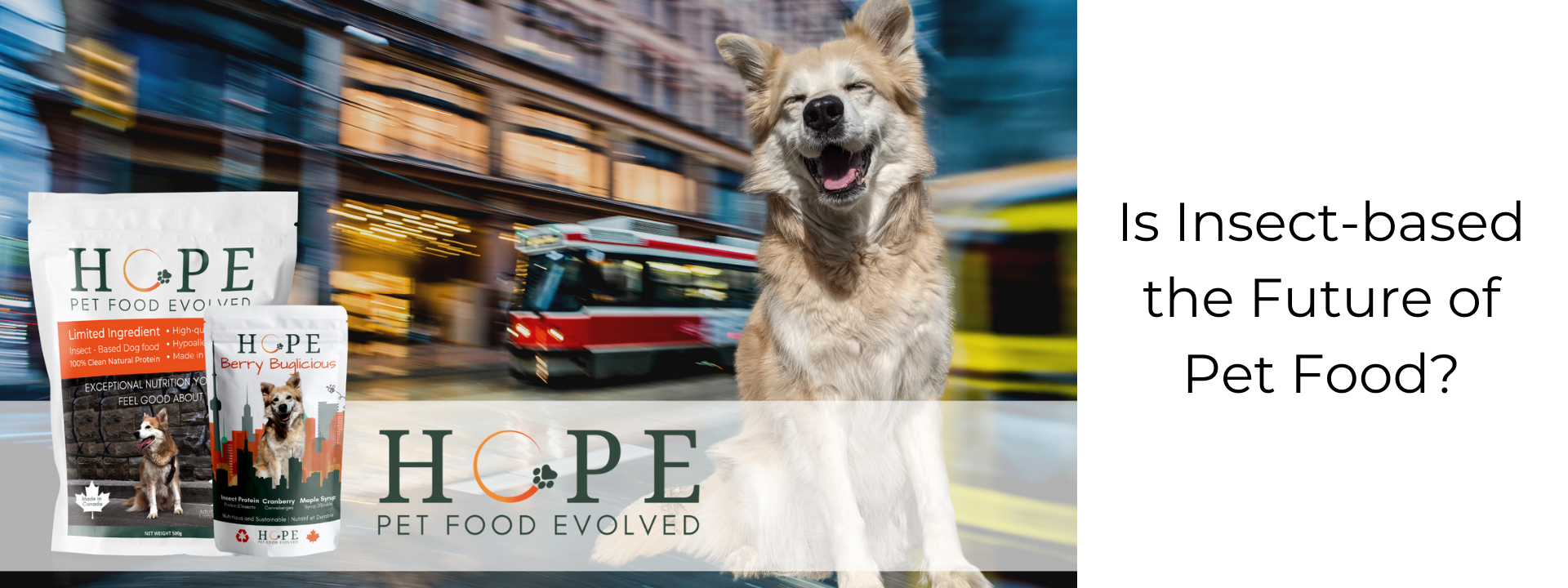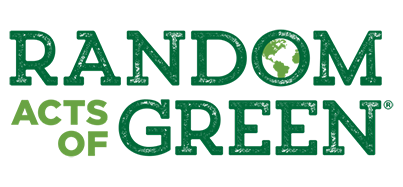If you're looking for Limited Ingredient Dog Food that's healthy for your pet and the planet, you've came to the right place!
But first:
▪️ Have you considered your dog’s food when trying to minimize your carbon footprint?
▪️ Maybe you’ve already tried finding eco-friendly dog treats and your dog hasn’t liked them? Or you’ve attempted to rustle up homemade dog food?
▪️ Perhaps you haven’t considered the environmental ramifications of your pooch’s supper, and this blog title found you dashing to the kitchen to check the ingredients on the bag or tin of dog food?
Hopefully we’ll be able to help you out with a great, innovative, limited ingredient and sustainable option …
Welcome to our latest blog >
How to Spoil Your Dog While Saving the Planet!
We sat down with our friends from HOPE Pet Food to learn more about pet nutrition and the future of sustainable foods.
As awareness increases about the colossal carbon footprint agriculture leaves on our planet, people are making more conscious decisions about what they eat and where it comes from. It’s no secret that the climate crisis and our food choices are one and the same. After all, food production accounts for a quarter of the world’s greenhouse gas emissions. Although intergalactic travel would be cool, we can all agree that taking care of this incredible floating space rock we call home needs to be our priority.
An intuitive recommendation you commonly hear is: buy local. Naturally, this makes sense. If the food has less distance to travel, then fewer emissions come from that food, right?
Transportation turns out to be one of the least prominent factors when assessing a food’s carbon footprint. It’s what you’re eating, not where it’s from, that holds the most weight in terms of environmental impact. To put this in perspective, the transportation of beef amounts to only 1% of its total carbon emissions. Even if you eat local beef, the bad news is it’s still leaving a huge carbon footprint.
But, people aren’t the only ones consuming huge amounts of animal protein…
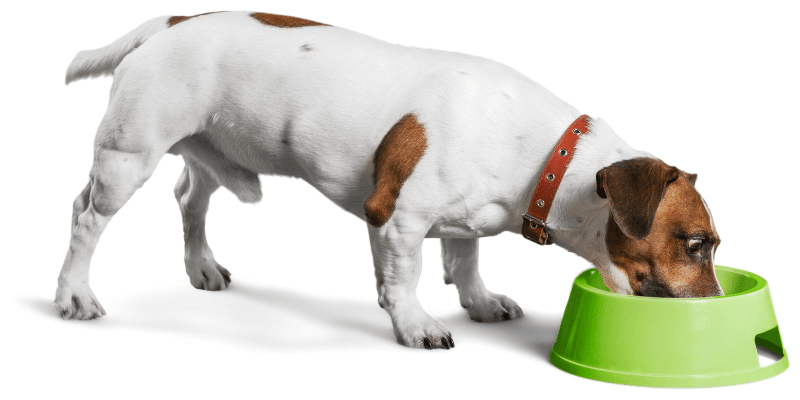
What about our pets?
Something that may never have crossed your mind is that your pet’s diet has a huge impact too. Think about how much food a dog eats over their lifetime. Not only do we have a huge and growing dog population, but chances are they’re eating a meaty diet, since that’s the most available food on the market. Marketing messages even tell us that our pets need more and more meat.
The shocking reality is that 14 million Canadian pets now consume a whopping 25% of the meat being produced! It’s no secret that one of the largest carbon emitters is meat production. As we mentioned earlier, beef alone leaves a Bigfoot sized carbon footprint on the planet!
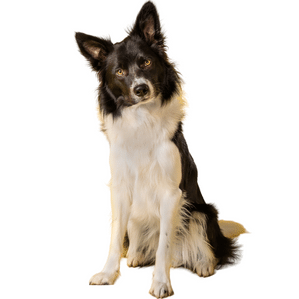
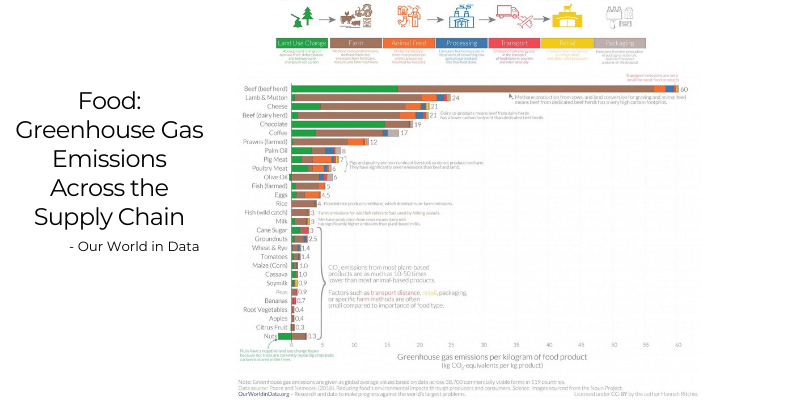
So, maybe you feel stuck between a rock and a hard place when you think about the health of your pet and the health of the planet. How is it ethical to sacrifice one for the other? Is there even a viable solution that reduces the amount of meat in our pets bowls?
In short, the answer is a resounding YES! We do not need to sacrifice the planet or our pets’ health thanks to new innovative and sustainable options.
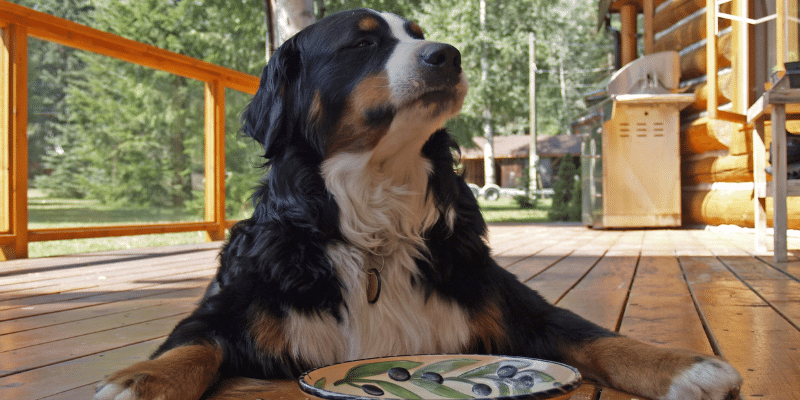
A Solution for Pet and Planet:
Our current meat consumption is simply not sustainable – no matter where it’s from. Whether you buy meat at your local farmers market or from the opposite side of the world, it makes very little difference to its environmental impact. But, both humans and pets need protein and going plant-based can be complicated when it comes to the nutritional requirements of our dogs.
So, what’s the solution?
What if we told you there’s a complete, biologically appropriate, and environmentally sustainable protein source that is a realistic solution for feeding our dogs?
It may sound too good to be true, but our research is clear: bugs are best!

Author
Stephanie Ward
Stephanie started her journey towards a sustainable lifestyle young: at the age of 12, she started a ‘compost bin’ in a margarine container — and left it for her mum to find under the sink many weeks later … Needless to say, her eco-skills have improved since then! A vegan of 10+ years, a staunch animal welfare advocate, and an avid recycler, you’re most likely to find her on a hike, or in the garden.
Join Our Email Community
Gain exclusive access to green trends, tips, and tricks when you sign up for our free newsletter. Enter your email to join our community of changemakers!
Is Insect-based the Future of Pet Food?
Your first reaction may be confusion or “Yuck” but, bugs are pretty incredible and a viable long-term solution! Not only are they tasty, they’re environmentally sustainable to farm, and uber-nutritious. Bugs are a complete protein, so they have all the essential amino acids to keep your furry best friend healthy and happy.
Insect protein can be used to meet or exceed the nutrient requirements for adult dogs set by FEDIAF and AAFCO. That’s because they are nutrient-rich: they have more calcium than milk, more iron than spinach, and double the protein of beef!
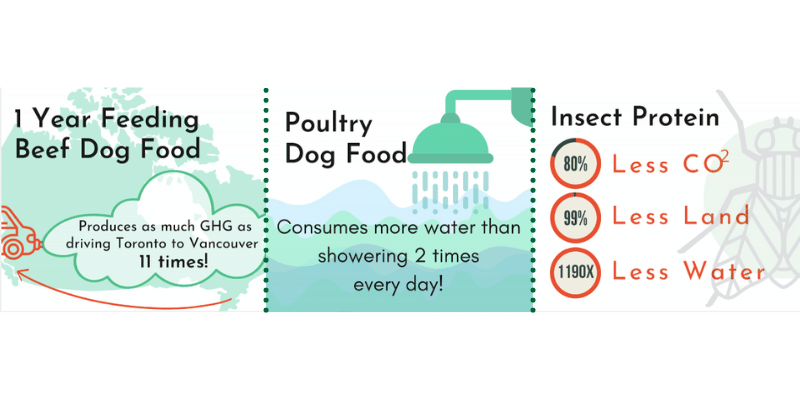
Have we piqued your interest?
Here are some more mind-blowing facts:
- Insects are farmed vertically (think: bug condos) so they take up a fraction of the land that animals take to farm. It takes more than 7 football fields of land to produce the amount of beef an average dog eats every year, while the comparable insect protein would barely register on the scale at 115m2 .
- They can be used to upcycle waste. That banana peel you never ate? A delicious meal for a bug! The larvae also produce “waste” that is then used as organic fertilizer, making it a fully circular process.
- Insects take way less time, water, and energy to grow – they double their body weight daily while using 99% less land and water.
- They add variability and stability to our food chain.
- They’re a novel protein source making them hypoallergenic!
These are just a few of the reasons why we believe bugs are the future for sustainable dog food (and treats!). So, if you want to spoil your dog without spoiling the planet give bugs a try!
Baked in small batches with limited ingredients, HOPE is a crunchy and delightful snack that you can feel good about feeding your pooch. Naturally preserved with the kindest, most sustainable ingredients, these 100% Canadian biscuits will keep your best friend coming back for more!
Here’s what goes into HOPE’s Insect-Based, Limited Ingredient Dog Treats:
Barley Flour,
Black Soldier Fly Protein,
Oats,
Black Soldier Fly Grubs,
Black Soldier Fly Oil,
Pumpkin,
Kelp,
Cranberries,
Apple Cider Vinegar
& Maple Syrup
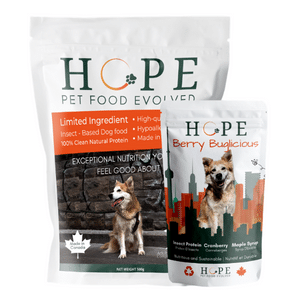
Do you want to learn more? Check out
HOPE Pet Food at the button below to learn more about premium insect-based, limited ingredient dog food and treats!
Sources:
Ritchie, H. (2020, January 24). You want to reduce the carbon footprint of your food? Focus on what you eat, not whether your food is local. https://ourworldindata.org/food-choice-vs-eating-local
University of California – Los Angeles. (2017, August 2). The truth about cats’ and dogs’ environmental impact: Researcher finds that feeding pets creates the equivalent of 64 million tons of carbon dioxide a year. ScienceDaily. www.sciencedaily.com/releases/2017/08/170802142835.htm
The Future of Feed: a WWF roadmap to accelerating insect protein in UK feeds (2021, July) https://www.wwf.org.uk/sites/default/files/2021 06/The_future_of_feed_July_2021.pdf
Okin GS (2017) Environmental impacts of food consumption by dogs and cats. PLoS ONE 12(8): e0181301. https://doi.org/10.1371/journal.pone.0181301
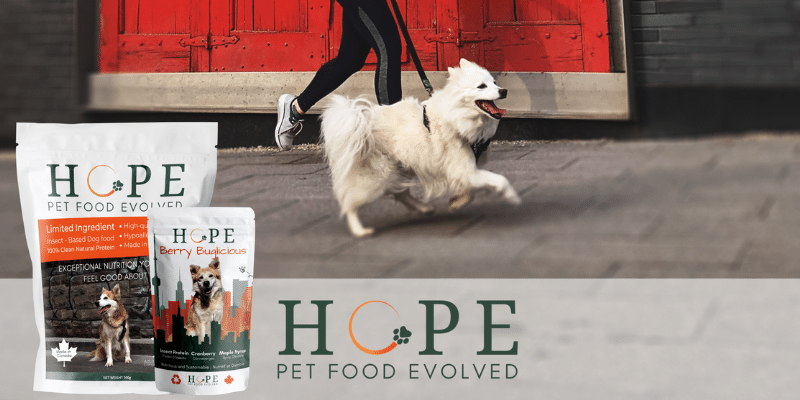
More Blog Posts:
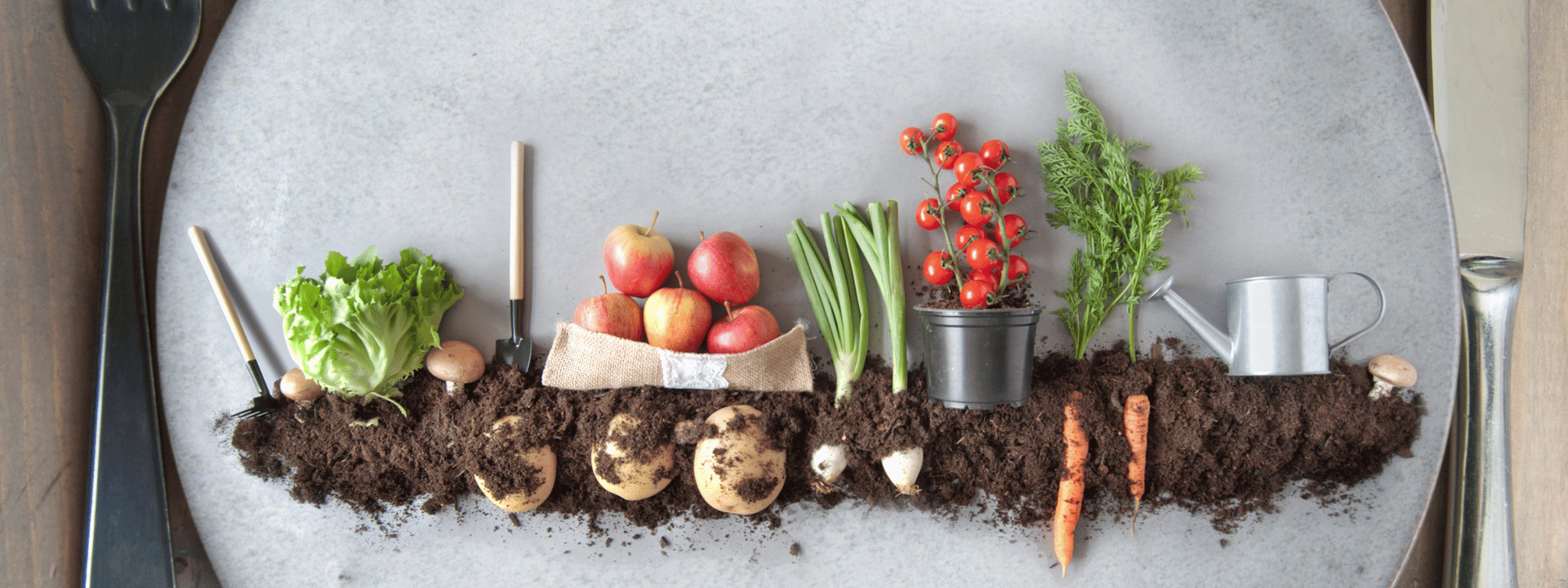
The Guide to Veganuary!
Whether you are going full vegan or starting to eat less meat, our guide to veganuary will help you go plant-based in 2023.
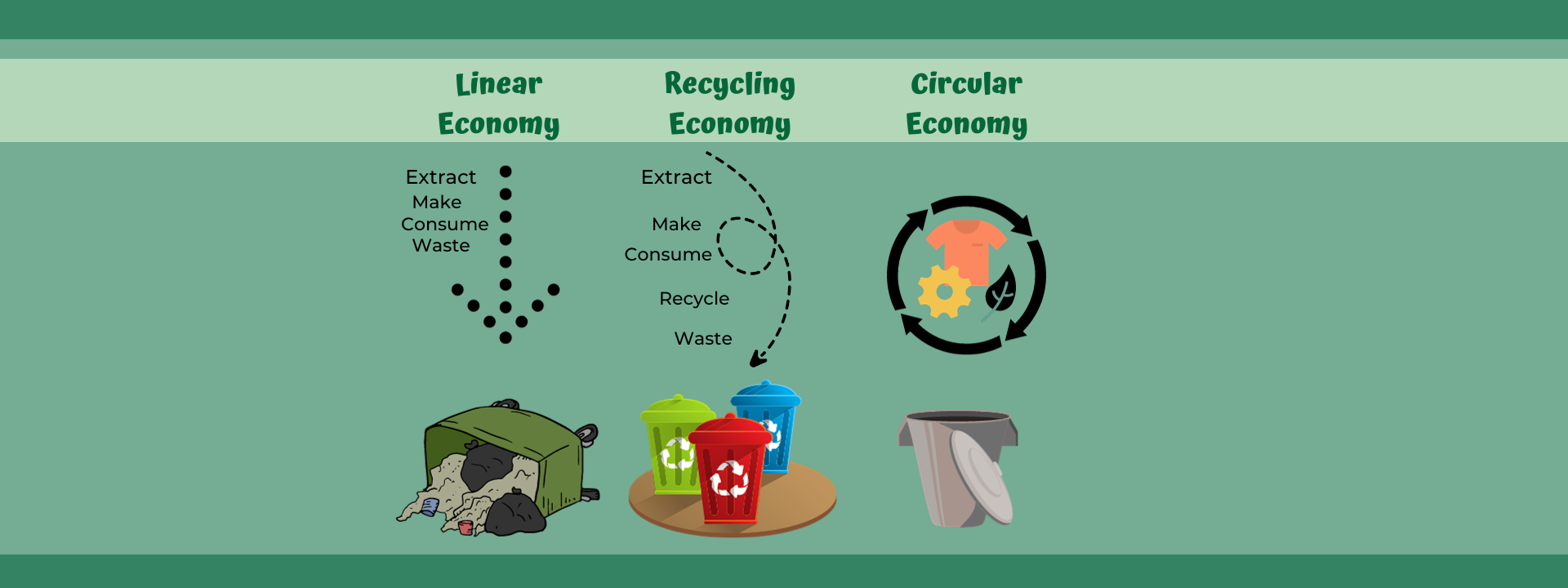
5 Circular Economy Companies in Canada To Celebrate Waste Reduction Week
Say hello to 6 Circular Economy Companies in Canada this October as we Celebrate innovators during Waste Reduction Week.

